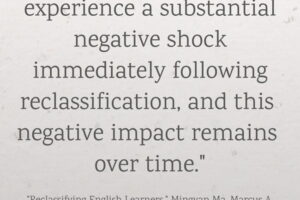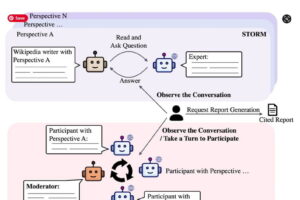
Catalyzing the Future of Learning: How Public Seed Funding Drives EdTech Innovation and Scale
By Edward Metz, Eric Tucker, and Tom Vander Ark
A new report, From Seed Funding to Scale, reveals a small, publicly funded R&D program punching far above its weight. Small federal grants helped give about 130 million students and teachers access to innovative learning tools – at a cost of roughly $0.70 per user. That’s roughly the price of a few pencils for a student’s backpack. In the age of AI, this track record proves public seed funding can effectively scale innovations for learning and flourishing while delivering value for every dollar.
Punching above Its Weight in EdTech Innovation
The U.S. Department of Education’s Small Business Innovation Research program (SBIR) is a powerful engine for innovation. It provides early-stage capital (up to $1.25 million in two phases) for small businesses to develop and test research-based education technologies. In essence, it bridges academic ideas to classroom practice. Over 2012–2022, SBIR-supported tools reached approximately 130.6 million students, educators, and school leaders – about four in five K–12 learners nationwide – on just $92 million in funding. That works out to around $0.70 in public funding per user reached. Moreover, these projects collectively attracted $827 million in revenue, investment, and acquisition value – roughly a 9:1 return on the government’s investment. Nearly one in five SBIR-supported startups has been acquired by larger education companies. This small public R&D fund has helped seed a thriving edtech ecosystem and proven that bold public investment can yield outsized results.
Accelerating the Future of Learning and Flourishing
SBIR helps promising innovations reach classrooms by uniting researchers and entrepreneurs to turn proven ideas into real-world tools. The program has produced a string of success stories demonstrating how public funding can accelerate and amplify innovations that advance the future of learning and flourishing. For instance:
- Alchemie’s KASI (Accessible STEM Learning) – an AI-delivered multisensory learning tool designed to make chemistry concepts accessible to blind and visually impaired students through tactile manipulatives paired with audio-based augmented reality, which is distributed in partnership with WILEY.
- PocketLab (Science) – engages students in hands-on learning by providing wireless sensors and data visualization tools that allow students to conduct real-time experiments, collect and analyze data, and explore scientific concepts through direct, inquiry-based investigation, which is distributed with HMH.
- Kibeam (Early Reading) – children use an AI-powered wand for scaffolding and personalized support while learning to read paper-books.
- Charmtech’s Capti Voice (diagnostic reading assessments) – employed engaging AI-driven performance-based assessments for students to apply real-world knowledge while reading, rather than selecting an answer on a multiple-choice test.
- Cognitive Toybox – (School Readiness) – an early childhood holistic assessment platform acquired by Teaching Strategies, combines observation and direct (game-based) tools to assess the school readiness of individual children.
- codeSpark (Coding for Kids) – a game for children to practice computer science basics was acquired by BEGiN in 2021 and is now in 40% of all schools in the country.
- Hats & Ladders (Workforce Readiness) – an interactive in-person and online game-based learning and career exploration that builds self-awareness, goal-setting skills, and knowledge of real-world career pathways, is in wide-scale use in New York City schools..
- Future Engineers (Making in STEM) – a platform that coordinates submission and judging of national STEM challenges, where thousands of students from across the country submit proposals with their ideas to solve real-world problems through engineering design, innovation, and creativity.
- Gigantic Mechanic’s VOXPOP (History learning) – an in-person tablet-based, class-wide game for high school students to learn about history through primary source materials and role-playing.
Each venture navigated the journey from idea to implementation – updating prototypes, securing teacher buy-in, and finding a viable business model. SBIR’s focus on iterative development and evidence at every step helped these teams succeed where many others falter. This combination of rigorous research and real-world feedback turns meaningful insights into classroom-ready tools.
Investing in an AI-Powered Future
AI is ushering in a new era for teaching, learning, and flourishing. Tech leaders predict AI will transform every industry – education included – and if we respond timidly, we could miss a historic opportunity to improve learning. How do we harness AI’s promise? The SBIR approach offers a blueprint. Public R&D programs can de-risk early experimentation with AI-powered learning tools, ensuring they are not only novel but grounded in evidence and designed for equity from day one. We’ve already seen many examples – from AI-driven tutors to adaptive learning games – emerge through SBIR’s model of small, smart bets. Now is the time to double down.
Public Innovation Infrastructure at a Crossroads
Yet ironically, just as we should be doubling down, ED/IES SBIR faces an uncertain moment. The FY 2025 round of SBIR awards has been delayed by severe staffing cuts and budget freezes at the Department of Education. Given this uncertainty, many SBIR-funded startups are in limbo, forced to lay off team members, postpone studies, and risk losing momentum. One awardee had to let go of most of its team and pause a planned school trial amid the freeze. (Caffrey, 2025). Another founder warned that a prolonged funding disruption could be “fatal” for early-stage ventures. (Caffrey, 2025).
This crisis comes at a time when SBIR’s role as seed capital is more crucial than ever. Private investors have pulled back sharply from edtech – U.S. venture funding in the sector fell to about $2.8 billion in 2023, a 46% drop from 2022 and nearly 66% below the 2021 peak (Caffrey, 2024). Meanwhile, philanthropy is prioritizing established approaches over unproven innovations. SBIR is providing patient, risk-tolerant seed funding that neither today’s venture capital nor traditional philanthropy reliably offers.
Mobilizing Public Investment Infrastructures for Innovation for Learning and Workforce
We can’t leave innovation that advances AI and the future of teaching and learning to chance. Public R&D offers a smart path: it empowers agile problem-solvers, demands evidence, and shares risk in ways the private market won’t. The EDSAFE AI Alliance and Alliance for Learning Innovation are guiding the way, including with a Blueprint for Action on AI Literacy and proposals for state education R&D initiatives.
The success of ED/IES SBIR reminds us that transformative ideas in education often start small. With a little funding and a lot of collaboration, a project in a lab or a startup can grow to reach millions. As digital learning, AI, and experiential learning evolve, the need for this kind of innovation engine will only grow. It’s time for funders, policymakers, and innovators to co-invest in the next generation of learning tools by expanding bold public R&D support. From Seed Funding to Scale demonstrates that when we back visionary teams who marry technology with learning science and classroom reality, the payoff benefits learners, families, and educators. If we want big wins for learners, we must keep making these small, smart bets.
Congress should act to fully fund and staff the SBIR program, ensuring current projects can continue and the future cycles of awards proceeds on schedule.
Edward Metz is a developmental psychologist, education researcher, and is currently a visiting scholar at the Columbia University Teachers College. He was formerly a program manager of the U.S. Department of Education and Institute of Education Sciences’ Small Business Innovation Research program.
Source link



